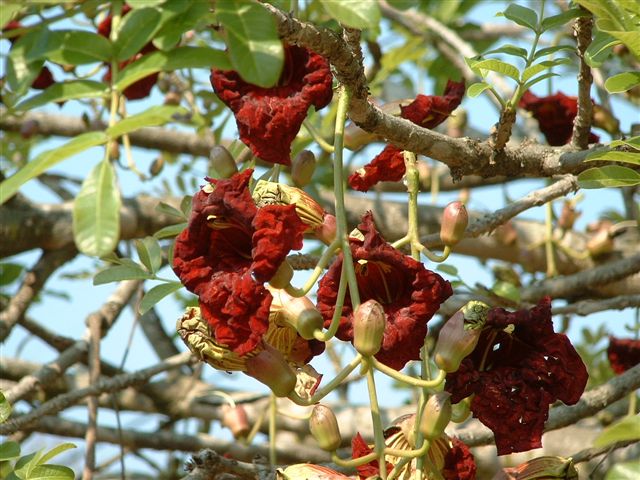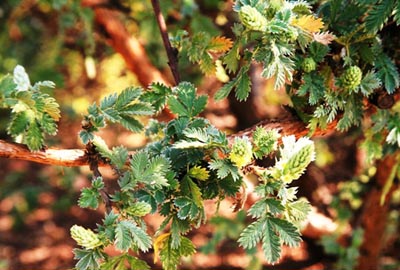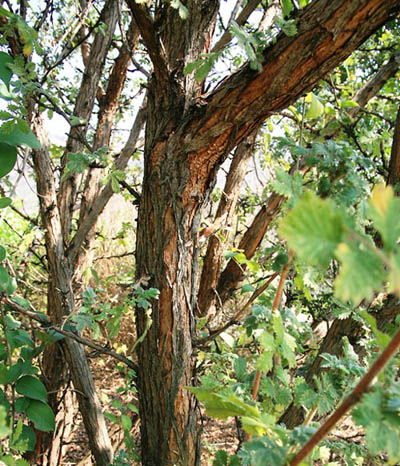|
Botanical name |
Kigelia africana |
|
Other names |
Sausage tree; worsboom (Afrikaans); umvunguta (Zulu) |
|
Family |
Bignoniaceae |
|
Dimensions |
A medium to large deciduous (in dry climates) tree of up to 25 m with a rounded to spreading crown |
|
Description of stem |
Brown or grey, rough, may be flaky in older trees |
|
Description of leaves |
Leathery, opposite or in whorls, compound along a single axis with a terminal leaflet (or imparipinnate), clustering towards the ends of twigs; leaflets oblong, hairy, yellowish green above, paler below, margins usually entire or slightly scalloped |
|
Description of flowers |
Large asymmetric, maroon, cup-shaped flowers with five velvety recurving and wrinkled petal lobes, asymmetric, hanging in long sprays, sometimes nearly a meter long; contains much nectar and give off an unpleasant odour; the flower usually lasts for a day only, only one per spray succeeds in being fertilised; flowering time is spring; pollination is said to be done by bats |
|
Desciption of seed/fruit |
Conspicuous oblong, grey fruit, resembling a huge sausage hangs down from long, rope-like peduncles; usually 50 cm long and nearly 20 cm wide; noticeable lenticels are spread along the surface; the unripe fruit may weigh 10 kg and contains a fibrous pulp holding many seeds |
|
Description of roots |
|
|
Variation |
|
|
Propagation and cultivation |
Grows from seed or truncheons; water well and plant in warmer climates |
|
Tolerances |
Frost sensitive |
|
Uses |
Flowers and the fruits are eaten by game when they drop from the tree; a very suitable tree for large gardens and parks; the fruit is said to yield a medicine for stomach complaints, rheumatism and syphilis; the seeds are sometimes eaten by people in times of shortage and used in beer fermentation; a skin care gel is marketed for conditions including psoriasis and eczema; dugout canoes (makoros) are made of the trunk as the wood is said not to crack easily; the roots are reported to yield a yellow dye |
|
Ecological rarity |
Not threatened |
|
Pests and diseases |
|
|
Other |
Established in places like Oudtshoorn (in spite of the winter temperatures), Rio de Janeiro, Panama, California, Hawaii and India |
|
Location |
Open woodland, river banks |
|
Distribution (SA provinces) |
Kwazulu-Natal, Mpumalanga, Limpopo |
|
Country |
South Africa, Swaziland, Mozambique, Botswana, Namibia, Zimbabwe, Zambia, Malawi, Tanzania, Kenya, Ethiopia, Somalia, Eritrea |

- Hits: 9901



